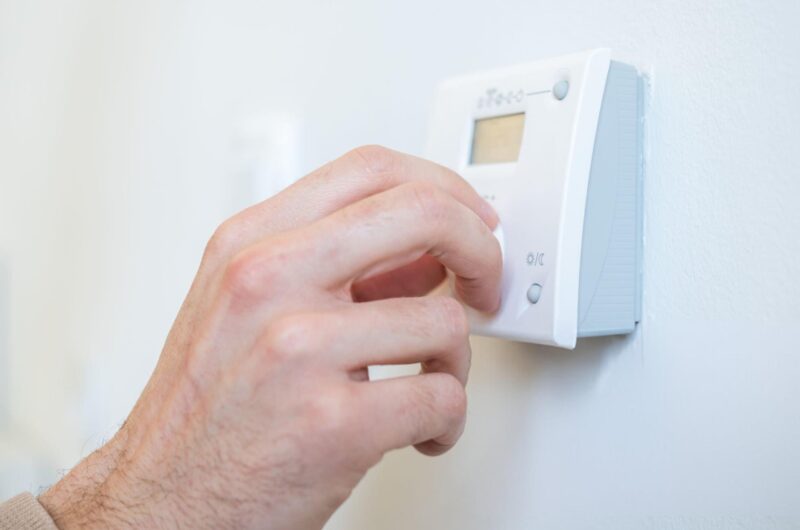Automatic timing controls play a key role in keeping machines and systems running the way they should. Whether you’re dealing with packaging equipment, conveyors, HVAC units, or manufacturing lines, these controls help handle things like start and stop sequences, lighting patterns, and scheduled movements. When everything works, they save time and prevent mistakes that come from relying fully on manual steps.
But when those same controls stop working, things can get messy fast. Work can slow down, delays add up, and issues might pop up one after another. Whether the failure starts suddenly or creeps in over time, knowing what steps to take makes a big difference. It helps cut down on stress and keeps you from spending too much time or money chasing the wrong fix. Here’s where to begin when your automatic timing controls aren’t doing what they’re supposed to.
Identifying The Problem
Before testing anything, take a moment to notice what’s going on. Timing control problems are rarely silent. Something usually seems a little off at first. The lights might not flash like they should. Motors start too soon or too late. Or everything just stops when it should be running.
Signs that your automatic timing control may be causing problems:
– Scheduled tasks start earlier or later than expected
– Devices don’t switch on when they should
– Timers are jumpy or reset without warning
– Blank or frozen screens on your timing module
– System keeps rebooting or won’t stay running
Spotting the symptom is often easier than figuring out how serious it is. A small time delay might mean a momentary power blip. But random system failures that come and go? Those usually point to failing internal parts or electrical issues.
Take one case where an irrigation system failed to activate at its set time. At first, the user thought a quick reset would solve it. But once the cover came off, they noticed water had seeped into the control box and wrecked the board inside. What seemed like a hiccup turned out to be serious damage.
Knowing how to read these early warnings makes it easier to separate harmless quirks from problems that can stop entire systems.
Preliminary Troubleshooting Steps
Once you’ve noticed something strange, start with a few easy checks. These steps don’t take much technical skill and might help you figure out if the fix is simple.
1. Check the Power Supply
Make sure the unit is plugged in securely and that power is flowing. If it runs on batteries, check the charge. Confirm that circuit breakers are on and fuses haven’t blown.
2. Inspect Wiring and Fuses
Look closely at the wiring. Watch for disconnected wires, burnt areas, or cracked insulation. Swap out any blown fuses with proper replacements and see if they blow again.
3. Reset the System
Unplug or power down the control and then restart it after a minute or so. A full reset might fix smaller issues.
4. Scan for Error Codes or Messages
Displays, indicator lights, or warning signals can point out the exact issue. Log any messages you see. This will come in handy if more help is needed later.
5. Listen for Unusual Sounds
Buzzing, clicking, or ticking can give clues. These noises sometimes mean a relay is sticking or failing.
While working through these checks, write down what you do and the results. Keep notes about any warning lights or codes, what worked or didn’t work, and anything odd you notice. Having a written list will help a technician figure things out a lot faster if they need to step in.
These steps are only meant to clarify whether you’re able to fix it yourself or need to escalate. If there’s no progress after these basic checks, it’s a good idea to stop guessing and call someone in.
When To Call In A Professional
At a certain point, someone with the right background should step in. Some timing control problems go deeper than a flipped breaker or loose wire. These systems often have detailed logic patterns and interconnected electronics. A wrong guess can set off even more trouble.
Here are signs that mean it’s time to bring in professional help:
– The system throws unknown codes that won’t clear
– Timers stop working entirely or fail on and off with no pattern
– You smell something burning or notice melted areas
– Reattached cables and parts aren’t syncing correctly
– A recent update or hardware change created new errors
If your work depends on controlled timing, every delay costs time and money. The longer something sits in limbo, the more damage it can cause to related machines or lines.
Let’s say a packaging conveyor keeps starting up too early due to a timing issue. That could lead to bottles stacking too soon or materials spilling. Not only does this waste resources, but it also shortens equipment life and risks worker safety.
Technicians have both the tools and know-how to deal with more advanced failures, like burned relay boards or cracked timing chips. They can read layouts and track problems down fast. In many cases, letting them take over early cuts down on longer downtime and repeat service calls.
Preventative Measures For The Future
Once the system is working again, it makes sense to keep it that way. Simple maintenance now can prevent much bigger headaches later. You don’t need a full team—just a few smart habits.
To keep your automatic timing controls in good condition:
– Check controls and wiring every few months
– Clean the area around the unit to reduce dust
– Look for signs of corrosion and clean contacts as needed
– Monitor room conditions if humidity or heat is a concern
– Keep a copy of wiring diagrams and manuals nearby
– Set up regular inspections with a trusted technician
Some systems log internal activity. If yours has data tracking, look it over once in a while to check for early warnings. Frequent resets or small glitches could mean parts are wearing down before they completely fail.
It can also be helpful to train daily operators to spot odd behavior. Some of the best information comes from the people who work with the system each day. Make sure they know when to speak up about blinking lights, missed timers, or inconsistencies.
Looking ahead doesn’t require big planning. A few proactive steps can save you from surprises and keep operations steady.
Keeping Things Running Without Disruption
Automatic timing controls are easy to forget about when they’re working. But when they stop, everything tied to them feels the ripple. Knowing what to watch for, how to run basic checks, and when to hand it off to a pro helps everything move forward with less stress.
Once the immediate issue is solved, the real advantage comes in upkeep. Making a habit of inspection, cleaning, and quick response gives your team the edge. Whether on a factory floor or inside custom commercial equipment, timing matters. And when those systems are set up and cared for the right way, the entire flow stays on track every step of the way.
If you’re looking to keep your systems functioning at their best and tackle any disruptions with confidence, understanding how to manage and maintain your automatic timing controls is key. Should you need expert guidance or solutions tailored to your specific needs, Garnett Component Sales is here to help. Learn more about how we can support the longevity and reliability of your timing systems.








